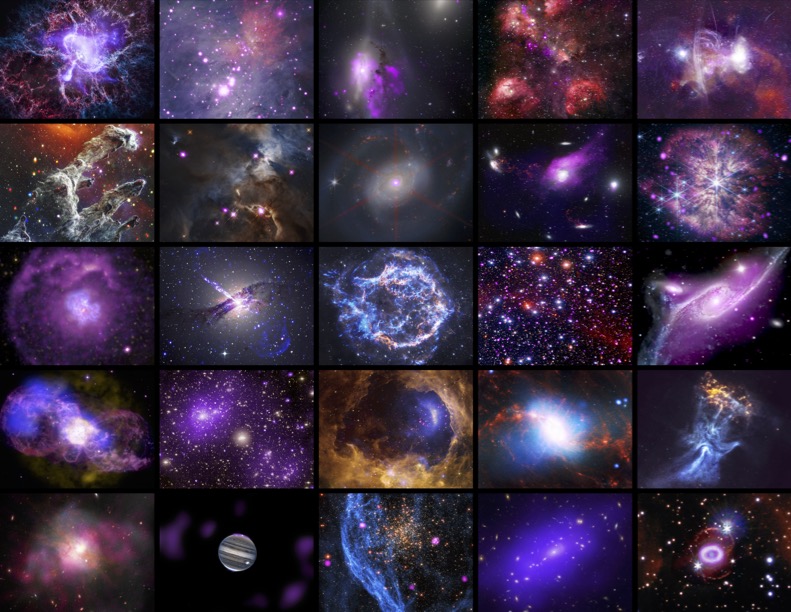The x-ray sky in high definition: 25 years of astrophysics with the Chandra X-ray Observatory
X-ray astronomy is a product of the space age. Possible only from viewing platforms above the atmosphere, the first celestial x-ray source other than the Sun was discovered just over sixty years ago. Following fresh on the heels of this discovery, with X-ray astronomy just barely in its infancy, an almost unimaginably bold proposalwas put forth to build a visionary space-borne observatory based on x-ray optics whose resolution and sheer size represented leaps by orders of magnitude over any such mirrors ever built. Following a series of smaller, but ever-improving x-ray observatories, this vision was fully realized in July of 1999 with the launch and deployment of NASA’s Chandra X-ray Observatory.

Over a quarter century later, Chandra remains the world’s premier x-ray astrophysics facility – the crucial high energy component of NASA’s fleet of flagship observatories. From resolving the hazy x-ray background into a speckled array dominated primarily by black holes to peering through a gravitational lens to peek at supermassive black hole formation at the edge of time, Chandra has continued to do things that no other x-ray observatory can. It is unique, it is powerful, and it is healthy – poised to help continue framing the future of high-energy astrophysics for years to come. As we celebrate its ongoing success, and look forward to a future with continuing advances in high-resolution x-ray imaging, I will provide a summary of some of the most exciting results from Chandra’s ever-increasing scientific legacy, along with a look ahead to its continued role as both a unique stand-alone facility and a core element for panchromatic investigations of the universe.
Dr. Slane is the Director of the Chandra X-ray Center, which which controls science and flight operations for the Chandra X-ray Observatory, NASA’s flagship mission for x-ray astronomy. His research centers on high energy astrophysics, with particular concentration on the aftermath of massive stellar explosions (supernova remnants, young neutron stars, and pulsar winds). Dr. Slane has supported the scientific community as a member of the Executive Committees for the High Energy Astrophysics Division of the AAS and the Division of Astrophysics of the APS. He has been the recipient of numerous NASA Group Achievement awards and Smithsonian Superior Accomplishment awards, and has been elected as a Fellow of the APS. A former high school teacher, he remains involved in a variety of education outreach activities to bring science topics to schools and the public, and in supervising the research efforts of undergraduate and graduate students.


